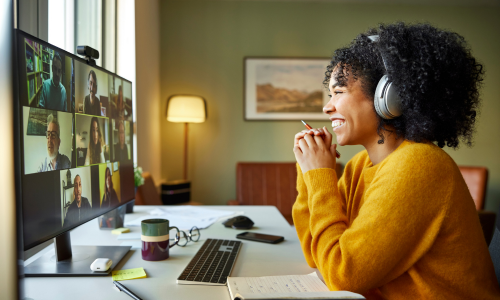How to Slay the Learning Measurement Monster
You don’t have to tell Learning and Development (L&D) leaders that learning measurement is not their biggest strength. Brandon Hall Group™ research has established this year after year after year.
One of Brandon Hall Group’s clients calls learning measurement “our unslayable monster,” and that pithy little phrase became the inspiration for our recent webinar, presented in collaboration with our partners at Litmos, “Slaying the Monster: Success Stories in Delivering Learning ROI.” You can watch the recording of that webinar here.
Our featured expert, Jen Jackson, Senior VP of Global Customer Experience at Litmos, didn’t dwell on the problem. She focused on the solutions and stressed that the learning measurement monster can indeed be mastered.
“When people look at learning measurement, they often look at whether people like the experience and what they learned. But the thing that really matters is the application of skill and whether that is creating a difference for the business,” Jackson said. “That is what everyone should be looking for once they have invested in training: the impact it had on the organization.”
Jackson said that measuring the ROI of learning, which many organizations focus on, can be a complex task, primarily because the benefits of training often take time to materialize. A great complement to ROI is ROE (Return on Expectations), which more organizations are beginning to use. To effectively measure ROE, Jackson said, learning professionals should:
- Collaborate with leadership to establish clear and realistic goals for the training program.
- Tailor the program to align with these specific objectives, encompassing behavioral changes, learning outcomes and desired results.
“By combining the assessment of both ROI and ROE,” Jackson said, “you gain a more comprehensive understanding of the significance and impact of your employee training efforts.”
These comments during the webinar — along with deeper explanations and examples — led to an interactive session in which attendees filled the chat box with great questions and insights from their encounters with the measurement monster.
You’ll want to listen to the success stories of how Litmos partnered with three clients — Sabre, TTEC and ServiceMax — to improve the business impact of learning.
- Sabre, a prominent technology solutions provider in the travel industry, had no consistent method of training its sales teams. The company was also unable to track accomplishments and struggled to coordinate training for globally dispersed teams. Using the Litmos LMS, the training team was able to generate quality reports to monitor learning programs, which led to a streamlined training process, significant time and cost savings and a 28% increase in customers in one year.
- TTEC, a global customer experience company, faced challenges in efficiently onboarding and training call center agents for their clients. TTEC partnered with Litmos to streamline their training initiatives and collaborated with Litmos on several projects, ensuring swift and effective training solutions that ultimately led to exceptional customer experiences.
- ServiceMax, a global provider of field service software solutions, faced challenges in enhancing employee knowledge and engaging customers through eLearning initiatives. The company needed to improve employee learning paths and offer customer certification programs. After implementing the Litmos LMS, more than 300 employees completed crucial job-related courses and ServiceMax expects to generate $1 million —between face-to-face customer training and online training — using Litmos.
In the webinar, Jackson also discusses the key questions organizations should ask themselves to improve their learning measurement:
- How does learning contribute to business goals?
- How can we measure the impact of learning on key performance indicators (KPIs)?
- What KPIs should we measure?
- How can we continuously improve learning initiatives to maximize business impact?
To delve into the entire conversation and begin considering your organization’s approach to learning measurement, make sure to watch the webinar recording.





